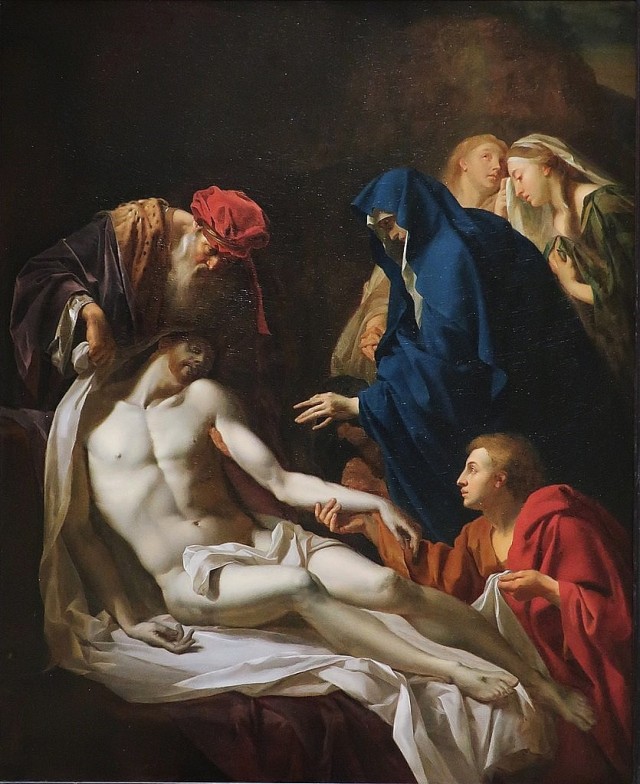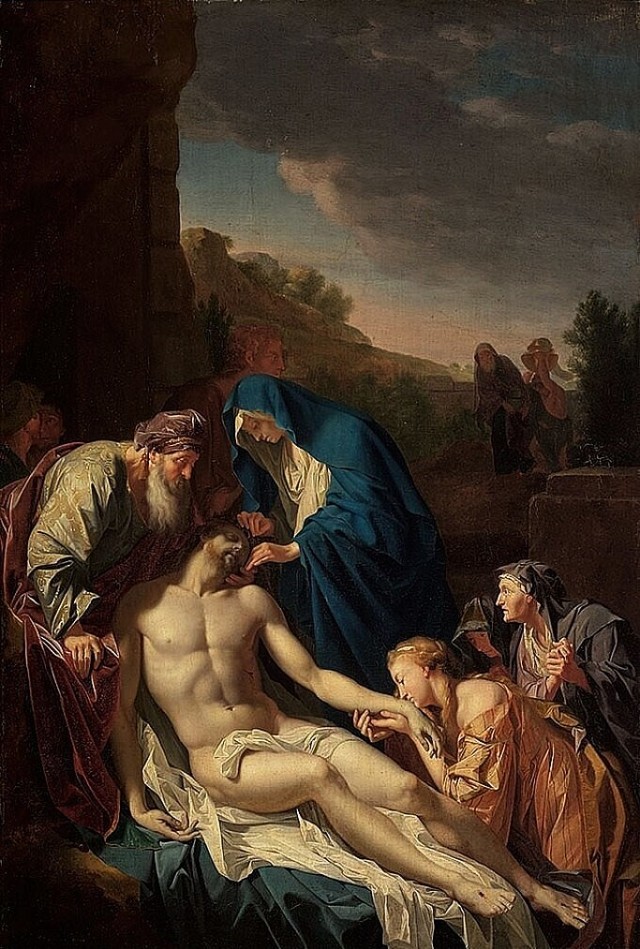ADRIAEN VAN DER WERFF (1659-1722)
The Lamentation (1685)
Oil on copper 63 x 51 cm
Mr Frederick Ruskin´s collection, on loan to the Phoenix Art Museum, USA
To enlarge the picture, right-click on it and “Open in a new tab”
Adriaen van der Werff was schooled in the fijnschilder (1) tradition of Gerrard Dou (1613-1675) and Eglon Hendrik van der Neer (1634-1703), with whom he studied between 1671 and 1676. During the early part of his career, van der Werff painted genre scenes and portraits; from the mid-1690s he painted an increasing number of history paintings in a more classicizing style. His meticulous technique earned him the patronage of influential collectors throughout Europe. From 1696 to 1716 van der Werff was employed by the Elector Palatinate Johann Wilhelm (1658-1716) in Dusseldorf, although van der Werff continued to reside in Rotterdam.
The subject of this work, The Lamentation, occupies a unique place between biblical narrative, recording a specific historical event, and devotional imagery prompted by meditations on Christ’s Passion, which enable the viewer to contemplate and identify with the emotions and piety of the persons represented. In van der Werff’s description, Joseph of Arimathea holds up Christ’s upper body and the shroud on which he lies. John crouches at Christ’s feet and tenderly supports his limp arm. Christ’s recumbent pose, his sharply turned head and his muscular torso; now slack and lifeless, are modelled on an engraving by Jan de Bisschop after an antique sculpture. Though her figure is almost obscured by her robe, Mary’s grief is poignantly expressed by a hand stretched longingly toward her son.
Nearly twenty years later, van der Werff painted a replica, with a slightly lighter palette, for Prince Josef Wenzel I von Liechtenstein which remains in the possession of the family.
The elegant lines of the figures, the muted palette, and the smooth surfaces not only convey the sombre nature of the subject but also specifically underscore the devotional aspect of van der Werff’s painting. A contemporary description of a painting of the same subject indicates how the classical restraint of the composition also served a devotional function:
“Pass then to a consideration of Christ’s Deposition, the pathos of the women moves the heart! And the affectionate care of Joseph of Arimathea ignites, indeed sets fully afire, the spectator’s tender compassion for mankind! How noble! How lofty! are all the accessories. No improper, no vulgar object here disturbs the attentive eye.” (2)

In 1703, van der Werff painted another, slightly larger version (81 x 54 cm), for the Elector Palatinate. In this version, today in the Alte Pinakothek (3) of Munich, the artist substituted the figure of St. John the Evangelist for Mary Magdalen and two other women. He also incorporated an extensive landscape with two figures in the background. The prince was so pleased with the painting that he bestowed a knighthood on the Dutch painter. There is also an exact copy of this version, by van der Werff himself, in the Museum Boijmans van Beuningen in Rotterdam (see below)

(1) The Dutch word fijnschilders (literally: fine painters) describes a group of painters based in the city of Leiden who, from about 1640 to 1710, specialized in pictures of small size, usually executed on copper, with a highly detailed and smooth finish.
(2) Quoted by D. P. Snoep in “Gods, Saints and Heroes: Dutch Painting in the Age of Rembrandt”, National Gallery of Art, Washington DC, 1980 (p. 248)
(3) The Alte Pinakothek (Old Paintings Gallery), inaugurated in 1836 by Ludwig I, is a magnificent museum that holds the old royal Bavarian collection of Old Masters (paintings from the 14th to the 18th century)
